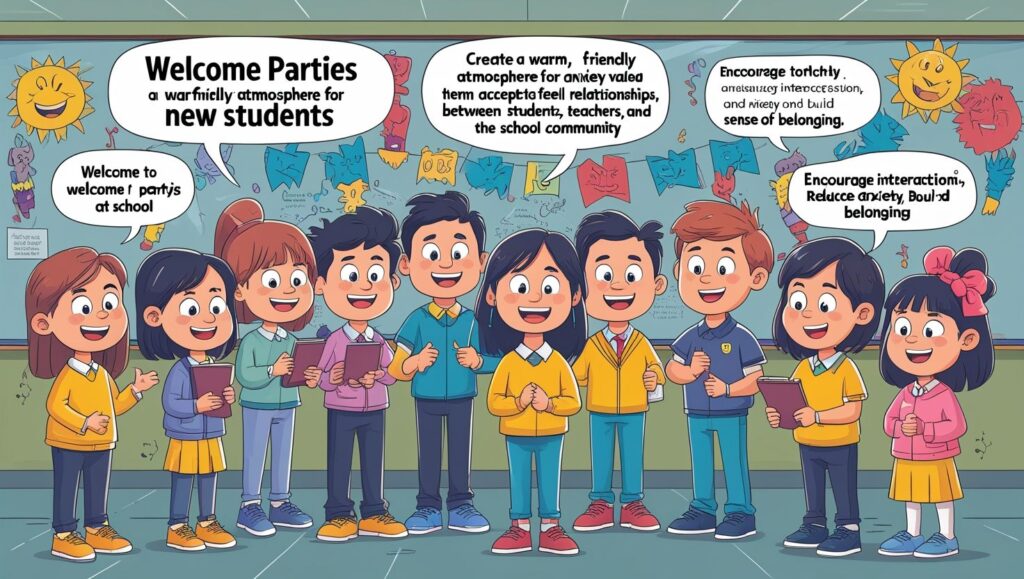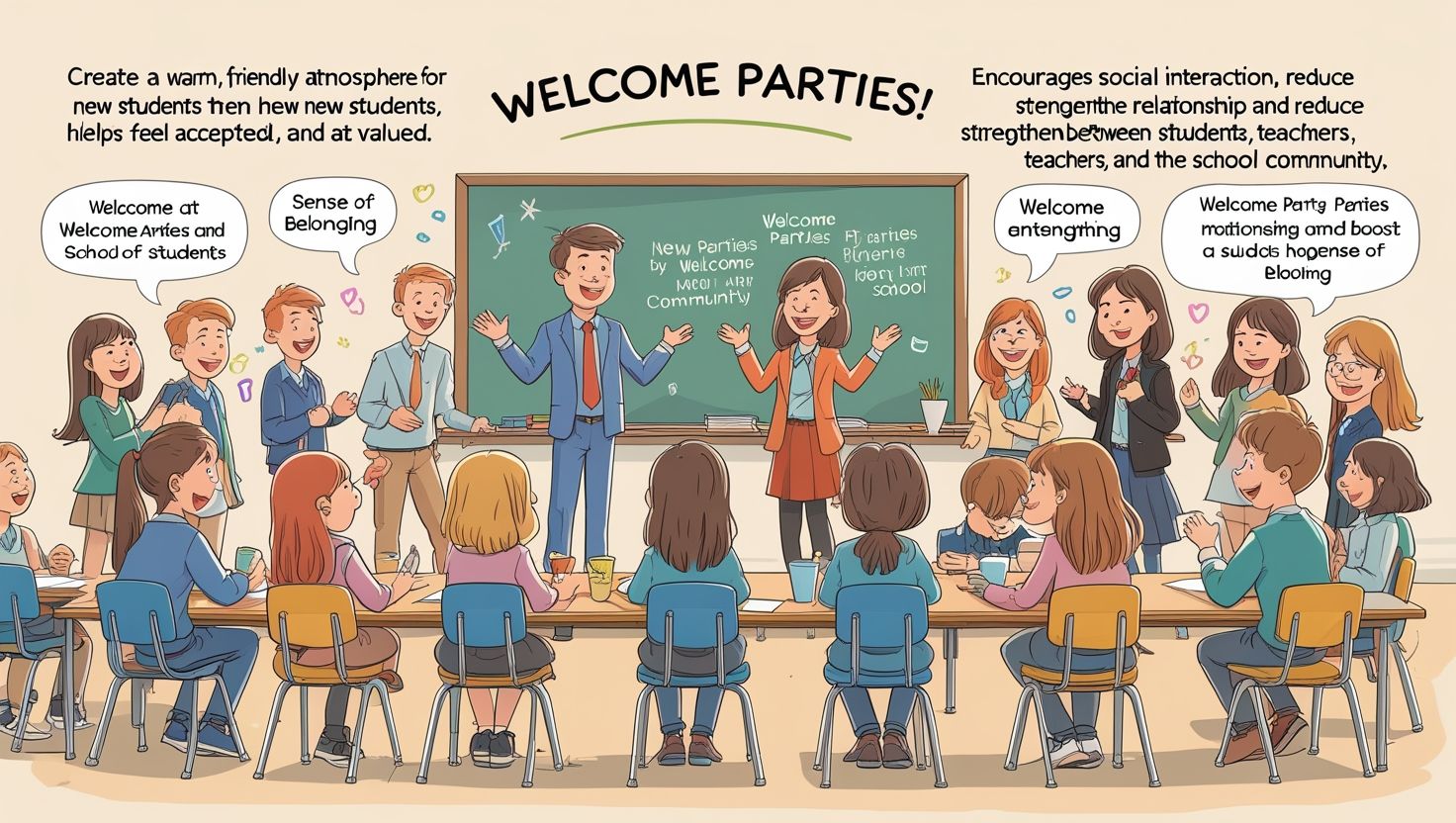Introduction:
The Impact of Welcome Parties at School, Welcome parties at schools are more than just gatherings; they are pivotal events that set the tone for the academic year, fostering a sense of belonging, connection, and positive engagement among students. These events serve as platforms for new and returning students to come together, break the ice, and establish relationships that can last a lifetime. In this article, we delve into the multifaceted impact of welcome parties at schools, exploring how they contribute to the overall well-being and academic success of students.
1. Creating a Sense of Belonging:
One of the most significant impacts of welcome parties is the creation of a sense of belonging among students. For new students, especially those transitioning from different schools or educational systems, the feeling of being a newcomer can be overwhelming. However, welcome parties provide them with an opportunity to feel included and accepted from the outset. Through activities, games, and interactions, students begin to form bonds with their peers, easing their transition into the school community. This sense of belonging is crucial for student retention and academic success, as students who feel connected to their school are more likely to engage in learning and extracurricular activities.

2. Building Relationships:
Welcome parties serve as catalysts for building relationships among students. As they participate in various team-building activities and icebreaker games, students have the chance to interact with classmates they may not have met otherwise. These initial interactions lay the foundation for friendships and support networks that extend beyond the event itself. Research has shown that positive peer relationships are associated with higher levels of academic achievement and emotional well-being. By fostering a culture of camaraderie and inclusivity, welcome parties contribute to the development of these crucial relationships.
3. Promoting Inclusivity:
Inclusive welcome parties send a powerful message that every student is valued and respected regardless of their background, interests, or abilities. By providing opportunities for students to collaborate and celebrate diversity, these events promote a culture of inclusivity within the school community. When students feel that their unique identities are acknowledged and embraced, they are more likely to participate actively in school activities and initiatives. In this way, welcome parties lay the groundwork for a supportive and welcoming environment where all students can thrive.
4. Encouraging Positive Engagement:
Welcome parties play a vital role in fostering positive engagement among students, both academically and socially. By engaging in fun and interactive activities, students develop teamwork, communication, and leadership skills that are essential for success in school and beyond. These events also encourage students to step out of their comfort zones, try new things, and take initiative—all of which contribute to their personal growth and development. Additionally, the excitement and energy generated by welcome parties can carry over into the classroom, creating a more dynamic and enthusiastic learning environment.

5. Enhancing School Spirit:
Welcome parties are often accompanied by spirited displays of school pride and unity. From wearing school colors to chanting cheers and songs, students come together to celebrate their shared identity as members of the school community. This sense of school spirit fosters a sense of pride and belonging among students, instilling a deeper connection to their school and its values. Moreover, when students feel proud of their school, they are more likely to participate in extracurricular activities, attend school events, and contribute positively to the overall school culture.
6. Facilitating Parental Involvement:
Welcome parties are not only for students; they also provide an opportunity to engage parents and guardians in the school community. By inviting families to participate in these events, schools demonstrate their commitment to fostering partnerships between home and school. Parents who feel welcomed and involved are more likely to support their children’s education, communicate with teachers, and actively participate in school activities. This collaboration between parents and schools creates a supportive network that enhances student success and well-being.
7. Setting a Positive Tone for the Academic Year:
The impact of welcome parties extends beyond the event itself; it sets a positive tone for the entire academic year. By starting the year with a celebration of community, friendship, and shared goals, schools establish a foundation for a successful and fulfilling school year. The connections formed during welcome parties continue to strengthen over time, creating a supportive network that sustains students through challenges and triumphs. Moreover, the enthusiasm and energy generated by these events create momentum that carries into classroom learning, extracurricular activities, and school initiatives.
Conclusion:
Welcome parties at schools are more than just social gatherings; they are transformative events that shape the school experience for students. From fostering a sense of belonging and building relationships to promoting inclusivity and positive engagement, these events play a crucial role in creating a supportive and vibrant school community. By embracing the impact of welcome parties, schools can cultivate an environment where every student feels valued, connected, and empowered to succeed.

bc01c2
1vzn25
ccfmmz
My brother recommended I might like this website. He was entirely right. This post actually made my day. You can not imagine just how much time I had spent for this info! Thanks!
Informasi akses situs Sigma slot
jxkhmf
Make mornings more adorable with this Hello Kitty alarm clock CD player. Ideal for kids and collectors alike, this charming CD clock radio includes all the basics: AM/FM radio, programmable CD playback, and reliable alarm settings. Wake up to your favorite CD or a cheerful radio station with built-in stereo sound. A large digital display and simple controls make it easy to use, even for younger users. Combining cuteness with functionality, it’s a top pick among themed alarm clocks with CD players that bring fun and joy to your space.
Heya! I’m at work surfing around your blog from my new iphone! Just wanted to say I love reading through your blog and look forward to all your posts! Keep up the outstanding work!
you have a great blog here! would you like to make some invite posts on my blog?
Hello! I could have sworn I’ve been to this blog before but after browsing through some of the post I realized it’s new to me. Anyways, I’m definitely happy I found it and I’ll be book-marking and checking back frequently!
I savor, lead to I discovered exactly what I was having a look for.
Yoou hve ended my four day lengthy hunt! God Bless you man. Have
a nice day. Bye https://glassi-app.blogspot.com/2025/08/how-to-download-glassi-casino-app-for.html
I really treasure your piece of work, Great post.
Whats up very cool web site!! Guy .. Excellent .. Wonderful .. I will bookmark your blog and take the feeds also?KI am happy to find numerous useful information here in the post, we need work out extra strategies in this regard, thank you for sharing. . . . . .
Thanks for the update, can I set it up so I get an update sent in an email when there is a new post?